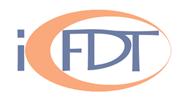Speakers
Prof.
Alexander Oraevsky
(TomoWave Laboratories, Inc.)
Angelo Ferrario
(Quanta System S.p.A.,)
Description
In 1880 Alexander Bell heard “a pure musical tone” in a closed gas volume that had absorbed a modulated sunlight beam. Later discoveries revealed that detection of ultrasound resulting from the optical absorption of modulated laser energy represents a very sensitive means for detection of various molecules in gases and liquids. Biomedical applications of laser optoacoustics exploded after our discovery of the physical principles governing acquisition of spatially resolved images in the depth of live tissues.
This lecture will discuss the state of the art and prospectives of the optoacoustic imaging starting with its physical principles, systems and finally biomedical applications. Ideas that made this rapidly developing technology possible were that (1) laser pulses may be effectively used to produce acoustic pressure in biological tissues, (2) the resulting acoustic (ultrasonic) waves can propagate in tissues with minimal distortion, (3) 2D and 3D maps (images) of the absorbed optical energy can be reconstructed with high resolution under the illumination condition of pressure confinement in the course of the optical energy deposition into a voxel to be resolved.
An optoacoustic system provides optical contrast in tissue while mapping tissue structures with ultrasonic resolution. The main advantages of the optical contrast is the applicability of spectroscopic optoacoustic imaging to (1) map distributions of blood concentration and its oxygen saturation (functional imaging) in the given tissue, and (2) map distribution of molecules of interest, such as cancer receptors or other biomarkers (molecular imaging) using nanoparticles as contrast agents. For example, high optical contrast of blood (specifically hypoxic blood) makes visualization of the tumor angiogenesis possible, thereby providing functional information for differentiation of malignant and benign tumors. On the other hand, ultrasonic imaging based on reflection of ultrasound beams from the boundaries of acoustic impedance can produce high resolution maps of anatomical tissue structures. The idea that drives present developments in the field of optoacoustic imaging is that coregistration of optoacoustic and ultrasonic images would be a useful enhancement of almost every application of medical ultrasound, yielding accurate biomedical diagnostics based on comprehensive information that may be obtained from functional maps of tissues correlated with anatomical maps. New laser technologies, such as monoblock diode pumped solid state systems, bring the opportunity to produce compact, robust and cost-effective systems for the laser optoacoustic imaging.

